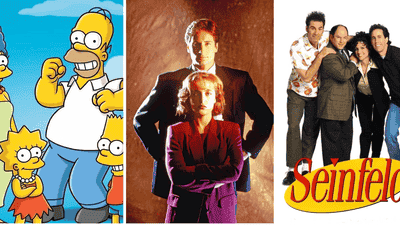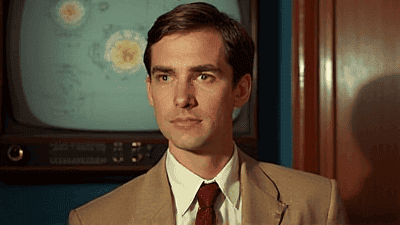
Unveiling Television's Pinnacle: Five Indispensable Series from its Golden Age
The "Golden Age of Television" signifies a transformative period where the medium ascended to unprecedented levels of artistic quality and cultural relevance. This era, broadly characterized by sophisticated storytelling, cinematic production values, and complex character development, redefined viewer expectations and challenged traditional narrative structures. It marked a significant departure from conventional episodic television, establishing a new benchmark for excellence in serialized drama.
This pivotal era fundamentally reshaped the entertainment landscape, demonstrating television's capacity for profound artistic expression and its unique ability to engage audiences over extended narrative arcs. Its impact spans the scientific community, which now studies viewing habits and psychological engagement with complex narratives, to the industry, which has pivoted towards high-budget, prestige productions. Landmark series from this period sparked critical discourse, influenced subsequent generations of creators, and cemented television's status as a formidable art form alongside cinema. With streaming platforms now dominating consumption, understanding the foundational shows of this "Golden Age" is crucial. What impact would it have on our understanding or our practice of media consumption and storytelling if we failed to fully comprehend the profound artistic and cultural shifts initiated by these seminal works?
The Genesis of Complexity

Shattering Tropes: The Sopranos and the Anti-Hero
The Sopranos (1999-2007) is widely credited as the catalyst for television's Golden Age, fundamentally altering how audiences perceived protagonists and narrative depth. At its core, the series redefined the "anti-hero" archetype through Tony Soprano (James Gandolfini), a New Jersey mob boss who simultaneously navigates the brutal realities of organized crime and the mundane anxieties of family life and therapy. This duality was revolutionary; viewers were invited into the fractured psyche of a morally ambiguous character, forced to confront his humanity despite his heinous actions. The show skillfully blended brutal violence with existential dread and domestic comedy, creating a narrative tapestry previously unseen on television. Its innovative structure often eschewed clear-cut resolutions, mirroring the messy ambiguities of real life and pushing the boundaries of what serialized drama could achieve. Psychologically, the series delved deep into themes of depression, anxiety, and the American dream's dark underbelly, often using dream sequences and therapy sessions as narrative devices to explore Tony's subconscious. Creator David Chase's refusal to simplify characters or situations elevated television from mere entertainment to a profound cultural commentary. Its influence is palpable in nearly every prestige drama that followed, demonstrating that television could be as complex and artistically ambitious as film.
The Art of Transformation
From Good to Bad: Breaking Bad and Character Metamorphosis
Breaking Bad (2008-2013) stands as a masterclass in character study and narrative execution, meticulously charting the descent of Walter White (Bryan Cranston), a meek high school chemistry teacher, into a ruthless drug kingpin, Heisenberg. The series is celebrated for its perfectly paced storytelling, where every plot point, seemingly minor detail, and character decision contributes to an irreversible chain of consequences. This narrative precision, often described as a "moral slippery slope," captivated audiences, compelling them to witness a complete psychological and ethical transformation. Creator Vince Gilligan famously described the show's premise as "turning Mr. Chips into Scarface," a journey that explored the corrosive effects of power, ambition, and desperation. The visual language was equally groundbreaking, employing cinematic techniques such as dynamic camera angles, symbolic color palettes, and breathtaking desert cinematography that elevated the series' aesthetic quality to feature film standards.
The show's critical and commercial success grew steadily, culminating in a viewership surge for its final seasons, a testament to its compelling narrative and word-of-mouth acclaim.
| Season | Average US Viewers (Millions) | Metacritic Score | Emmy Wins (Major) |
|---|---|---|---|
| Season 1 | 1.23 | 73/100 | 0 |
| Season 2 | 1.29 | 85/100 | 1 (Outstanding Lead Actor) |
| Season 3 | 1.52 | 89/100 | 1 (Outstanding Lead Actor) |
| Season 4 | 1.90 | 96/100 | 1 (Outstanding Lead Actor) |
| Season 5 | 4.38 | 99/100 | 16 (including Outstanding Drama Series) |
As the table illustrates, Breaking Bad's audience expanded dramatically, particularly in its later seasons, underscoring its growing cultural impact and the effectiveness of its serialized storytelling. The critical reception, consistently high and peaking with a near-perfect score for its final season, further cemented its status as one of television's greatest achievements. This blend of critical adulation and burgeoning popularity solidified its place in the Golden Age pantheon, demonstrating how a series could maintain artistic integrity while building a devoted global fanbase.
Aesthetic and Cultural Resonance

Madison Avenue's Mirror: Mad Men and Societal Reflection
Mad Men (2007-2015) offered a meticulously crafted portal into 1960s America through the lives of advertising executives on Madison Avenue, primarily focusing on the enigmatic Don Draper (Jon Hamm). Beyond its stunning period detail and impeccable costume design, the series distinguished itself by dissecting the societal anxieties, cultural shifts, and deeply entrenched prejudices of the era. It masterfully explored themes of identity, sexism, racism, alcoholism, and the elusive pursuit of happiness in a rapidly changing world. Each episode functioned as a nuanced character study, revealing the inner turmoil and public facades of its ensemble cast, often without explicit exposition. The show's narrative style was frequently subtle, relying on visual cues, pregnant pauses, and character interactions to convey meaning, much like a novel. Creator Matthew Weiner's vision transformed historical context into a lens through which contemporary issues could be re-examined, proving that television could be a powerful medium for social commentary and historical introspection. Its influence on subsequent period dramas and its emphasis on character-driven, atmospherically rich storytelling remains profound, showcasing television's potential for artistic integrity and profound cultural reflection.
Conclusion
The Golden Age of Television, spearheaded by groundbreaking series such as The Sopranos, Breaking Bad, and Mad Men, fundamentally reshaped the landscape of visual storytelling. These shows, among others, dared to explore complex human psychology, embrace morally ambiguous characters, and commit to long-form narrative arcs that demanded viewer investment and patience. They demonstrated that television was not merely a medium for episodic distraction but a powerful platform capable of cinematic artistry, literary depth, and profound social commentary. By challenging conventional tropes, pioneering new forms of visual storytelling, and meticulously crafting worlds brimming with rich characters and intricate plots, this era elevated television to an art form worthy of serious critical analysis and global cultural discussion, permanently altering viewer expectations and industry standards.
Looking ahead, the legacy of the Golden Age continues to inspire new frontiers in television. The proliferation of streaming platforms promises an even greater diversity of narratives and voices, pushing boundaries in genre, representation, and interactive storytelling. However, challenges persist, including content overload, the sustainability of high-budget productions, and the evolving nature of audience engagement in a fragmented media landscape. Future breakthroughs will likely emerge from interdisciplinary integration, leveraging AI for personalized content recommendations, virtual reality for immersive experiences, and innovative financing models to support niche, high-quality productions. Continuous research into narrative impact, audience psychology, and technological advancements will be crucial to navigating this evolving terrain, ensuring that television continues its trajectory of artistic innovation and cultural relevance into the next generation.








